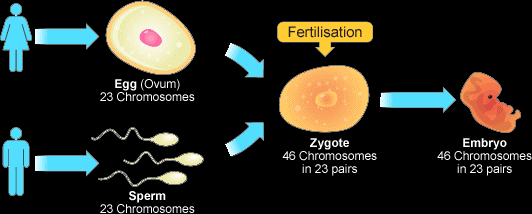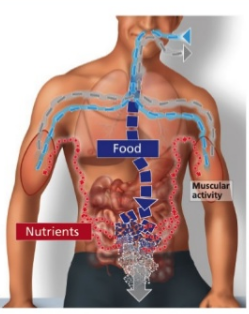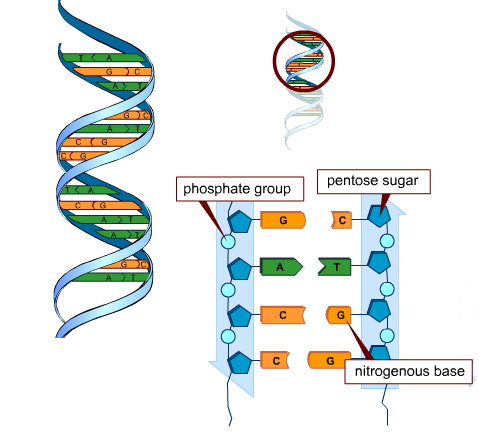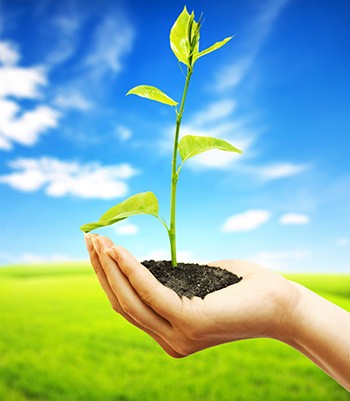Cellular association: living things are made out of single cell (unicellular living beings) or numerous cells (multicellular living beings) which take up with each other to perform essential elements of the body.
Response to stimuli: every single living thing can adapt and react to any adjustment in nature.
Reproduction: living things recreate either sexually or asexually to create offsprings of their own type.
Growth: every single living thing develops, matures and ages and then dies.
Metabolism: living things require vitality to complete their fundamental life forms.
Give us a chance to attempt to see each of these in detail below:
Every single living life form develops and grows. Increment in mass and increment in number of people are twin attributes of growth. A multicellular creature develops by cell division. In plants, this growth by cell division happens consistently for the duration of their life expectancy. In creatures, this growth is seen just up to a particular age. Be that as it may, cell division happens in specific tissues to supplant lost cells. Unicellular living beings develop by cell division.

Fig. 2: Every living thing grows
One must recollect that expansion in body mass is considered as growth. Non-living articles likewise develop in the event that we take increment in body mass as a foundation for growth. Mountains, rocks and sand hills do develop. However, this sort of growth showed by non-living articles is by gathering of material at first glance. In living creatures, growth is from inside. Growth, along these lines, can't be taken as a characterizing property of living life forms. Conditions under which it can be seen in every single living life form must be clarified and after that we comprehend that it is a normal for living frameworks. A dead living being does not develop.
Reproduction, in like manner, is typical of living life forms. In multicellular living beings, generation alludes to the creation of descendants having highlights pretty much like those of guardians. Constantly and verifiably we allude to sexual reproduction. Creatures imitate by asexual means moreover. Parasites duplicate and spread effectively because of the great many asexual spores they deliver.
In lower life forms like yeast and hydra, we watch growing. In Planaria (level worms), we watch genuine regeneration, i.e., a divided life form recovers the lost a portion of its body and turns into, another living being. The growths, the filamentous green growth, the protonema of greeneries, all effortlessly increase by discontinuity. With regards to unicellular life forms like microorganisms, unicellular green growth or Amoeba, generation is synonymous with growth, i.e., increment in number of cells. We have officially characterized growth as proportionate to increment in cell number or mass. Subsequently, we see that in single-celled life forms, we are not clear about the utilization of these two terms – growth and propagation.
Moreover, there are numerous life forms which don't regenerate (donkeys, sterile working drones, human couples that are infertile, and so forth). Henceforth, generation additionally cannot be a comprehensive characterizing normal for living beings. Obviously, no non-living item is fit for repeating or reproducing without anyone else's input.

Reproduction
Another typical characteristic is metabolism. Every living being are made of chemicals. These chemicals, little and enormous, having a place with different classes, sizes, capacities, and so on, are always being made and changed into some different biomolecules. These transformations are synthetic reactions or metabolic reactions. There are a huge number of metabolic reactions happening at the same time inside every living being, be they unicellular or multicellular. All plants, creatures, organisms and microorganisms show digestion system. Metabolic reactions can be shown outside the body in without cell frameworks. A secluded metabolic reaction(s) outside the body of a life form, performed in a test tube is

neither living nor non-living. Henceforth, while digestion system is a characterizing highlight of every living life form no matter what, separated metabolic reactions in vitro are not living things but rather clearly living reactions. Henceforth, cellular association of the body is the characterizing highlight of life structures.
The metabolic process is critical to health and life providing energy from the breakdown of food. Maybe, the most evident and in fact entangled component of every living life form is this capacity to detect their environment or environment and react to these natural stimuli which could be physical, concoction or organic. We sense our surroundings through our sense organs.
Plants react to outside factors like light, water, temperature, different creatures, contaminations, and so forth. All life forms, from the prokaryotes to the most complex eukaryotes can detect and react to ecological prompts. Photoperiod influences multiplication in occasional raisers, both plants and creatures. All creatures subsequently, are "mindful" of their environment. Individual is the main creature who knows about himself, i.e., has consciousness. Consciousness consequently, turns into the characterizing property of living creatures.

Nervous system consists of a group of organs which control and coordinate the activities of the various parts of the body in response to changes in environment

Plants respond to sunlight by bending towards it
With regards to people, it is all the harder to characterize the living state. Properties of tissues are not present in the constituent cells but rather emerge as an aftereffect of cooperation’s among the constituent cells. Correspondingly, properties of cellular organelles are not present in the atomic constituents of the organelle however emerge as an aftereffect of associations among the sub-atomic segments involving the organelle. These communications result in new properties at a more elevated amount of association. This wonder is valid in the chain of importance of hierarchical organizations at all levels. Thusly, we can state that living beings are self-reproducing.
Building Block of Life and their Functions
Living life form is shaped of many sorts of inorganic and also organic biomolecules. Inorganic compounds incorporate water, minerals and so on and are constantly micro biomolecules (little measured, low atomic weight, promptly dissolvable in water and diffusible) while organic particles might be smaller scale (e.g. monosugars, amino acids and so forth.) or macro biomolecules (expansive size, high sub-atomic weight, insoluble or somewhat dissolvable and non-diffusible e.g., fats, proteins, nucleic acids, and so forth.). These both sorts of biomolecules assume vital parts in digestion system:
Role of Water: Water frames 70-90% of the cellular pool. It frames 65% (around 66%) of human body. It is framed of H and O in the proportion of 2:1. 95% of water is found in free state and 5% in consolidated shape in the cell. Water helps in supporting the life forms. Hence water is known to be a remedy or support of lip as life is impractical without water.
Role of Oxygen: Oxygen is for the most part used in vigorous cell breath of the supplements inside the mitochondria to create energy-rich ATP particles so is fundamental forever. Without oxygen, just 5% of energy accessible is discharged.
Role of Sodium chloride (basic salt): Sodium chloride assumes a vital part in metabolic elements of body particularly when in ionic frame.
Role of Carbohydrates: Carbohydrates are organic compounds shaped of C, H and O for the most part in the proportion of 1:2:1. These are normally called saccharides (Gk. saccharon = sugar) Carbohydrates are the primary storage atoms and most life forms utilize starches as a vital fuel, breaking these securities and discharging energy to maintain life.
Role of Proteins: Proteins are polymeric compounds framed by interlinking of amino acids (monomers) by peptide bonds. Out of around 100 sorts of amino acids, just 20 sorts of amino acids are of natural significance, so are called Magic 20. Proteins assume a key part in the arrangement of structures in living beings. Like starch and fat protein can be separated with the arrival of energy. Protein is not stored all things considered in the body and it is regularly just utilized as a significant wellspring of energy in states of starvation.
Role of lipids: Lipids involve a noteworthy group of insoluble hydrocarbons having many capacities. These are polymers of alcohols (e.g. glycerol) and fatty acids interlinked by ester bonds. Complex lipids, for example, genuine fats are critical organic atoms that are utilized to give energy. Fats in creatures likewise give security from warmth loss.
Role of Nucleic Acid: These are polymers of nucleotides interlinked by phosphodiester bonds, alleged polynucleotides. Every nucleotide is framed of 3 segments: a pentose sugar (e.g. deoxyribose in DNA and ribose in RNA), a phosphate group and an inorganic nitrogen-base (a purine or a pyrimidine).
DNA goes about as genetic material in many living beings and controls the synthesis of auxiliary and. useful proteins. RNA likewise go about as genetic material in all plant viruses that is TMV and aides in protein synthesis.

Structure of DNA: Showing the phosphate group, pentose sugar, four nitrogenous bases namely adenine, thymine, cytosine, guanine.

Diversity in the Living World
The nature or living world is rich in assortment. A huge number of plants and animals have been distinguished and portrayed however extensive number still stays obscure. The very scope of life forms regarding size, shading, environment, physiological and morphological elements make us look for the characterizing attributes of living creatures.
number still stays obscure. The very scope of life forms regarding size, shading, environment, physiological and morphological elements make us look for the characterizing attributes of living creatures.
With a specific end goal to encourage the investigation of types and differences of living beings, scientists have developed certain principles and standards for identification, nomenclature and classification of creatures. The branch of information managing this type of information is alluded to as taxonomy.
The taxonomical information of different types of plants and animals are helpful in agribusiness, industry, forestry and as a rule for knowing our bio-assets and their variety. The rudiments of scientific categorization like nomenclature, identification and classification of life forms are standardized under universal codes. In light of the similarities and particular contrasts every creature is recognized and assigned a biological or scientific name containing two words according to the binomial arrangement of terminology.
A life form represents or possesses a spot or position in the arrangement of characterization. There are numerous classes or categories and are for the most part alluded to as taxonomical classifications or taxa. Every one of the classification constitutes a taxonomical hierarchy.
Taxonomists have built up an assortment of taxonomic guides to encourage identification, terminology and classification of living beings. These studies are completed from the genuine samples which are gathered from the field and protected as taxonomical aids as herbaria, historical centers and in organic greenery enclosuresand zoological parks.

Museums
 |  |
| Zoological Park | Herbarium |
It requires uncommon methods for gathering and safeguarding of examples in museums and herbaria. Live examples, then again, of plants and animals, are found in plant gardens or in zoological parks. Taxonomists likewise get ready and disperse data through manuals and monographs for further taxonomic research. Taxonomic keys are aids that assist in identification of any organism in view of its attributes.





















